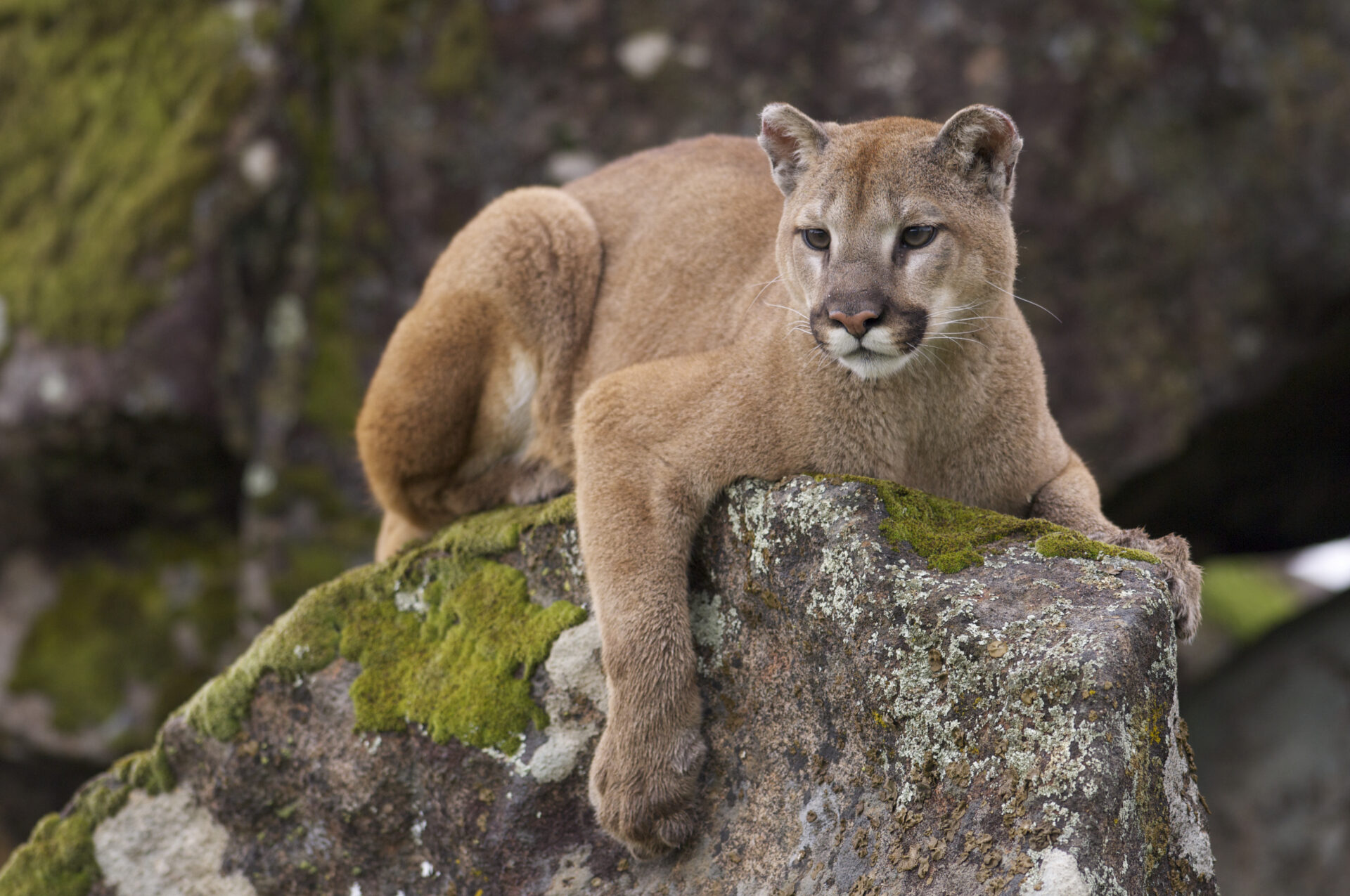
Mountain lions aren’t just beautiful animals – they’re a keystone species, helping maintain a balanced ecosystem in our region. They’re also at risk due to habitat loss and difficulty migrating to new territories. That’s why so much of Green Foothills’ advocacy work emphasizes mountain lion survival.
Mountain Lions – A Keystone Species at Risk
Whether you call this big cat a mountain lion, puma, or cougar, Puma concolor is one of the iconic species of the state of California. More closely related to domestic cats than to African lions, mountain lions inhabit a wide range of ecosystems, including mountains, forests, deserts, and wetlands. Mountain lions are a keystone species, which means that as apex predators, their presence helps maintain the balance of population of many other animal and plant species, and if they disappeared, the cascading effects would be felt throughout the ecosystem. They are territorial by nature, which means that young mountain lions need to be able to venture out into new regions in order to establish their own territory.
It’s this need to migrate to new territories that causes both the occasional conflict with humans and the threat to mountain lions’ survival. As humans encroach more and more on mountain lions’ historic habitat and range, these big cats get squeezed into smaller and smaller areas, causing them to wander into residential neighborhoods in search of prey. And the highways that mountain lions must cross to find new territory are often deathtraps. Being struck by cars or trucks is one of the major causes of death in mountain lions.
Saving Mountain Lions
In 2020, the state recommended that the Central Coast and Southern California population of mountain lions be considered for protection as a threatened or endangered species in California. (The Central Coast population includes mountain lions living in the Santa Cruz Mountains.) That recommendation triggered some automatic protections for this species while the review process is underway. Also, in order to help mountain lions migrate to new territories, conservation organizations and agencies are working to design and build wildlife crossings under, and sometimes over, the deadly highways that block their paths.
But these efforts will be in vain if sprawling development continues to eat up mountain lions’ remaining habitat. Green Foothills’ campaigns to protect Coyote Valley and Juristac, as well as our newly expanded work in San Benito County, are critically important to ensure that mountain lions’ migration routes are not blocked. We will continue to work to stop sprawl development in these open space areas and wildlife linkages, so that mountain lions and all other species can thrive.

Leave a Reply
You must be logged in to post a comment.